In “Reaping the Rewards,” I take a look at the finished product from a crowdfunding campaign. Today’s topic: The Grimm Forest, which was funded on Kickstarter in April 2017 and was delivered to backers last month. The three little pigs, once renowned builders, have gotten old and a little senile, so their nieces and nephews are competing for the title of Royal Builder. Who will be the first to complete three houses?
(Note: This review is adapted from my original Kickstarter alert, but updated to reflect final components and rules.)
What Is The Grimm Forest?
Grimm Forest is a game by Tim Eisner for 2 to 4 players, ages 13 and up, and takes about 45–60 minutes to play. It is now available in stores and online, with a retail price of $49.99. I’d say the game could work for players as young as 8, though an important part of the game is reading other players and figuring out what they might choose.
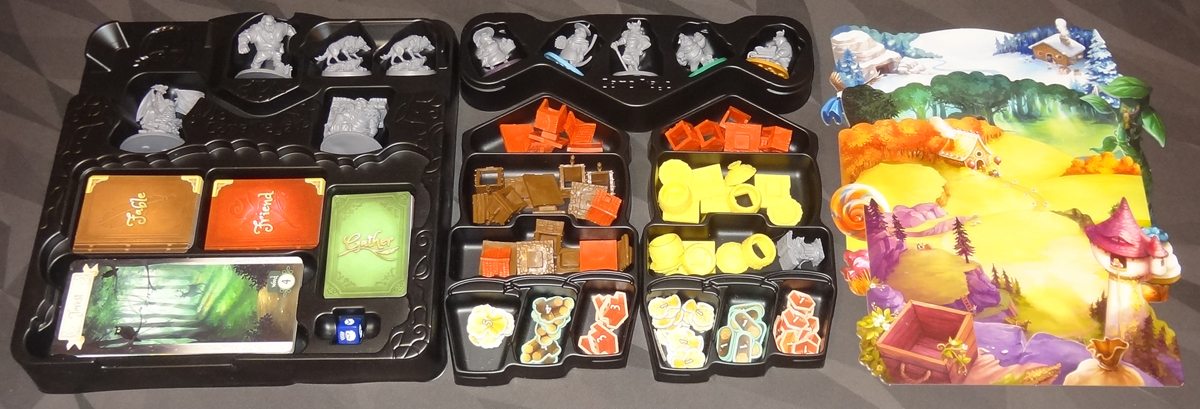
The Grimm Forest Components
- 4 Gather Location cards
- 3 First Builder Bonus tokens
- 1 Prince Regal resource die
- 45 House sections:
- 15 Floors
- 15 Walls
- 15 Roofs
- 4 Player boards
- 50 Single Resource tokens:
- 20 Straw
- 15 Wood
- 15 Brick
- 15 Mega Resource tokens:
- 5 Straw
- 5 Wood
- 5 Brick
- 11 miniatures:
- 4 Pig miniatures
- 1 Starting Player miniature
- 6 Monster miniatures
- 101 cards:
- 56 Fable cards
- 25 Friend cards
- 16 Gather cards (4 per player)
- 4 Player aids
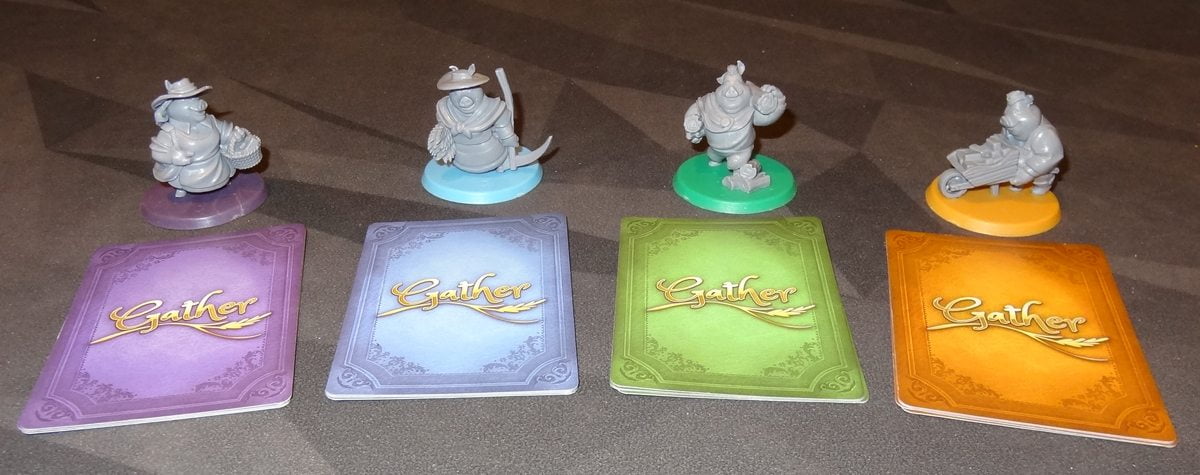
If you saw the prototype in my original Kickstarter alert, you’ll remember that there were some great-looking plastic components for the houses, some miniatures for the pigs and a start player marker, and a lot of great artwork on the cards. The pig minis are patterned after the illustrations on the Gather cards, which were done by Mr. Cuddington (the folks behind Unfair and Steampunk Rally, among other games). Thanks to stretch goals reached during the Kickstarter campaign, the finished game includes all of that plus several other miniatures: a dragon, a giant, a bridge troll, the Big Bad Wolf, and two regular wolves.
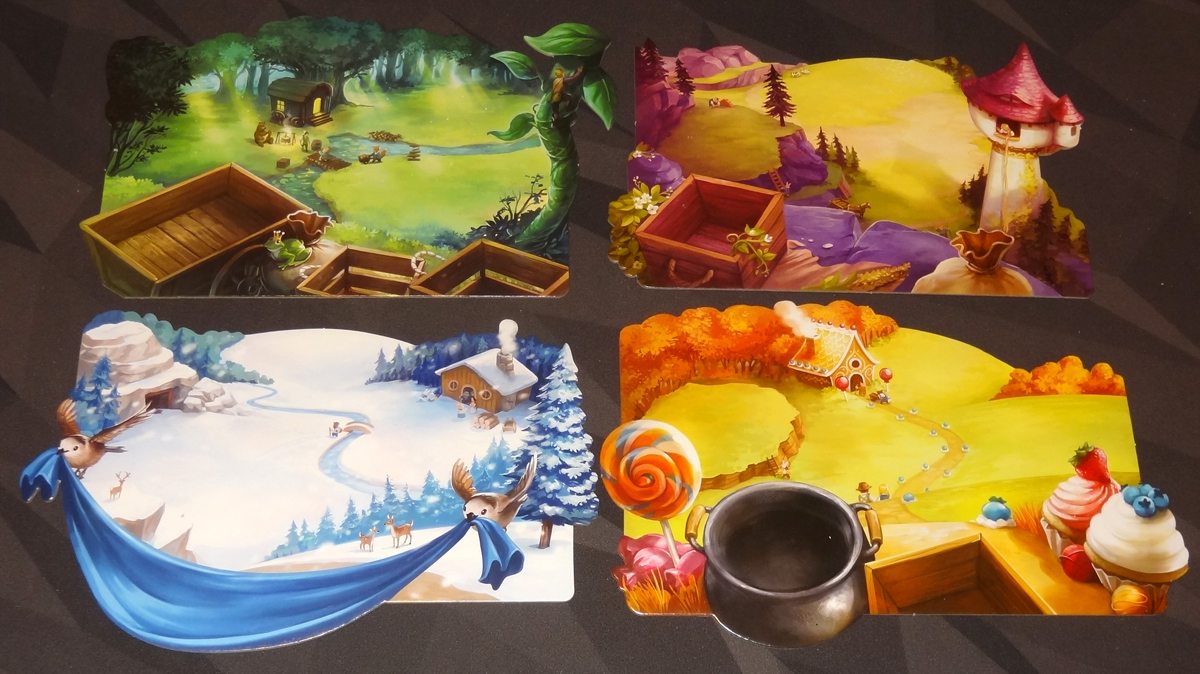
There are also a lot more friend and fable cards than in the prototype, and there are now four custom player boards, each with an accent color that matches the player colors (also used on the pig base and the gather card backs). My only complaint about the player boards is that they don’t have the building sites marked, and I find myself frequently checking the rulebook to find the number of houses you can build. (Note: the answer is five.)

Another feature added through stretch goals was the custom GameTrayz inserts, which keep everything organized and in place. There are two trays with lids for the house parts and resource tokens, one tray for the four pigs and the Big Bad Wolf, and then a tray at the bottom for the other monster minis, the cards, boards, and die. It is, as I’ve come to expect from GameTrayz, a thing of beauty, with an embossed house on the lid of the resource trays, the push-and-tilt feature for cards and boards, and specially designed wells so that you can put any of the pigs in any of the four pig spaces without having to remember which goes where.

The resource tokens come in single-value tokens and “Mega-Resource” tokens: 5 straw, 4 wood, or 3 brick. These are tied to the amounts that you restock on the location boards each time, and they make the cleanup phase really easy. It’s a small addition that does a lot to speed up gameplay.
I liked the bit of diversity seen in the friend cards. There are various characters from classic Grimm fairy tales, but not everyone is portrayed as Eastern European. Snow White is Asian, and Little Red Riding Hood is black. Most of the characters are still white, but I liked seeing a couple of non-white faces in the mix. (And, of course, there are plenty of animals and monsters.) I like the way the character powers make sense for the theme, and all of the artwork is really fantastic.
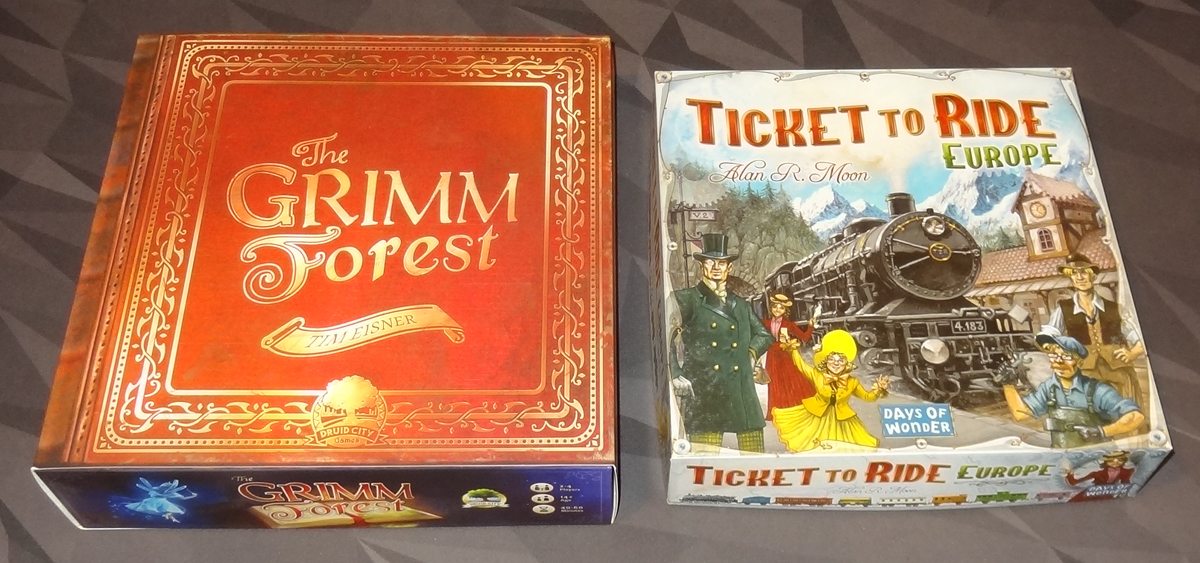
The only thing that was a Kickstarter exclusive is the box sleeve, which makes the game box look like a large red hardcover book. Everything else—the miniatures, the plastic houses, the fantastic box insert—all come in the retail edition. You’ll notice that the box is big, larger than a typical square box like Ticket to Ride: this is definitely a deluxe game with a huge shelf presence.

As I’ve mentioned before, while I do appreciate the top-notch quality of everything in the game, part of me feels that the game didn’t need to be this big. In particular, the miniatures are mostly extra and the monster miniatures may not even come into play in some games, but they increased the price and size of the game. It has a lovely toy factor, so if you like plastic miniatures it’s definitely more eye-catching than it would be with just cards, but the game would be just as playable without some of the extra bells and whistles.
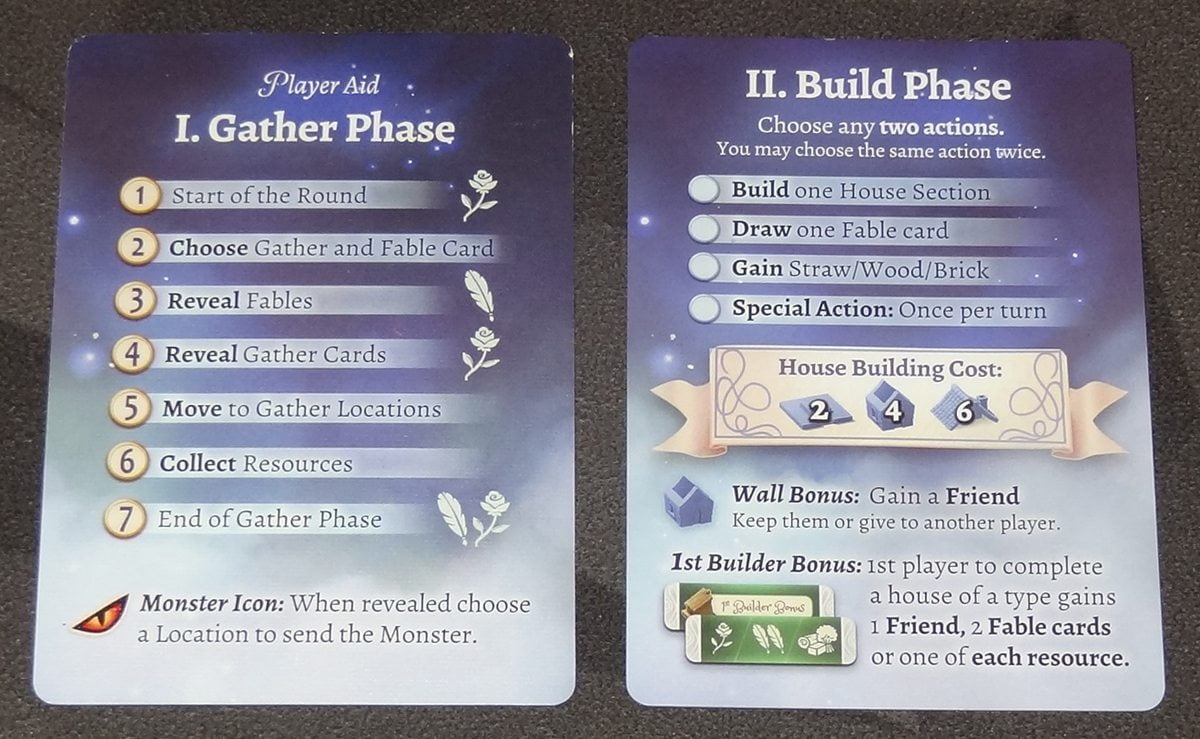
How to Play The Grimm Forest
You can download a copy of the rulebook here.
Goal
The object of the game is to be first to build three houses (of any material).
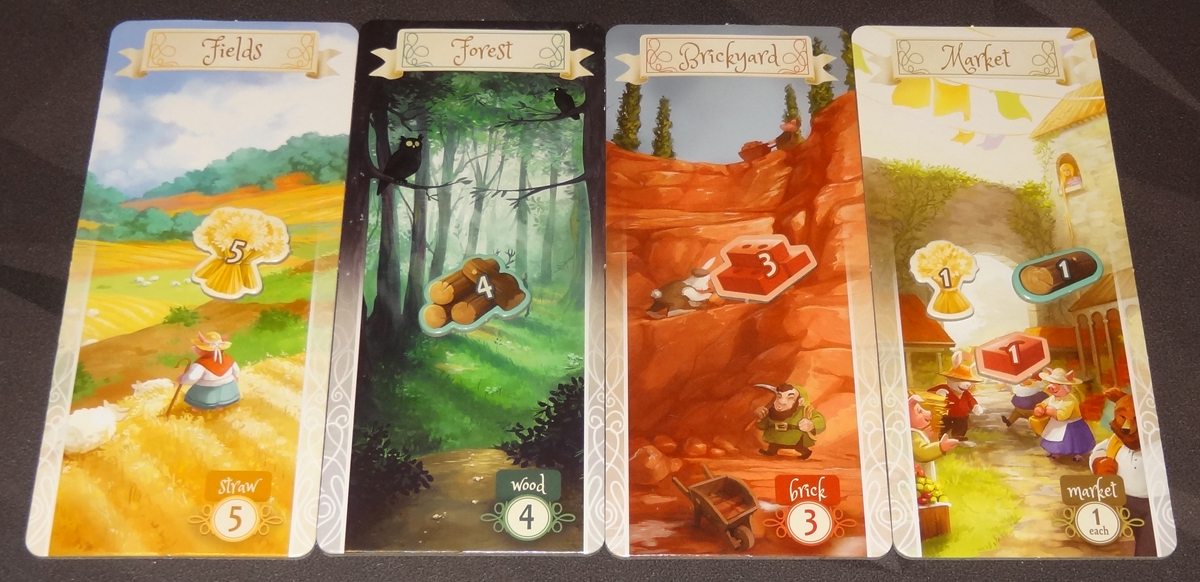
Setup
Each player gets a player board, gather cards, and a pig miniature. The two decks of cards (friends and fables) are shuffled separately, and the gather location boards are placed in the center of the table, along with all of the resource tokens. One player gets the Starting Player token.
Add resources to the game board: 5 straw, 4 wood, 3 brick—the Mega-Resource tokens match these amounts. In a 4-player game, you include the “Market” gather cards and gather location board, but, otherwise, they are not used; the Market gets 1 of each resource.
Gameplay
Each round has a Gather Phase, a Building Phase, and a Cleanup Phase.

Gather Phase
Each player secretly chooses one of their three gather cards (Straw, Wood, or Brick) and optionally one fable card. Once everyone has chosen, fable cards are revealed, which can have a lot of different effects. Once those are resolved, the gather cards are revealed and pig miniatures are placed in the corresponding locations on the board.
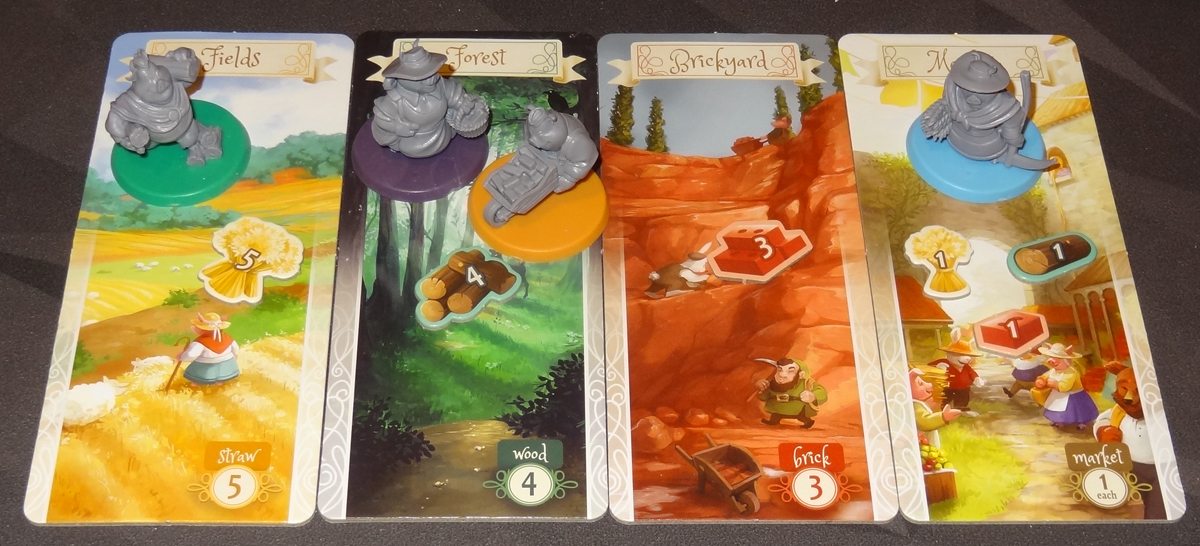
Players divide up the resources available at the locations equally among the pigs present. If you’re the only one at a location, you get all of the resources. If there is a remainder, it stays on the board for the next round.
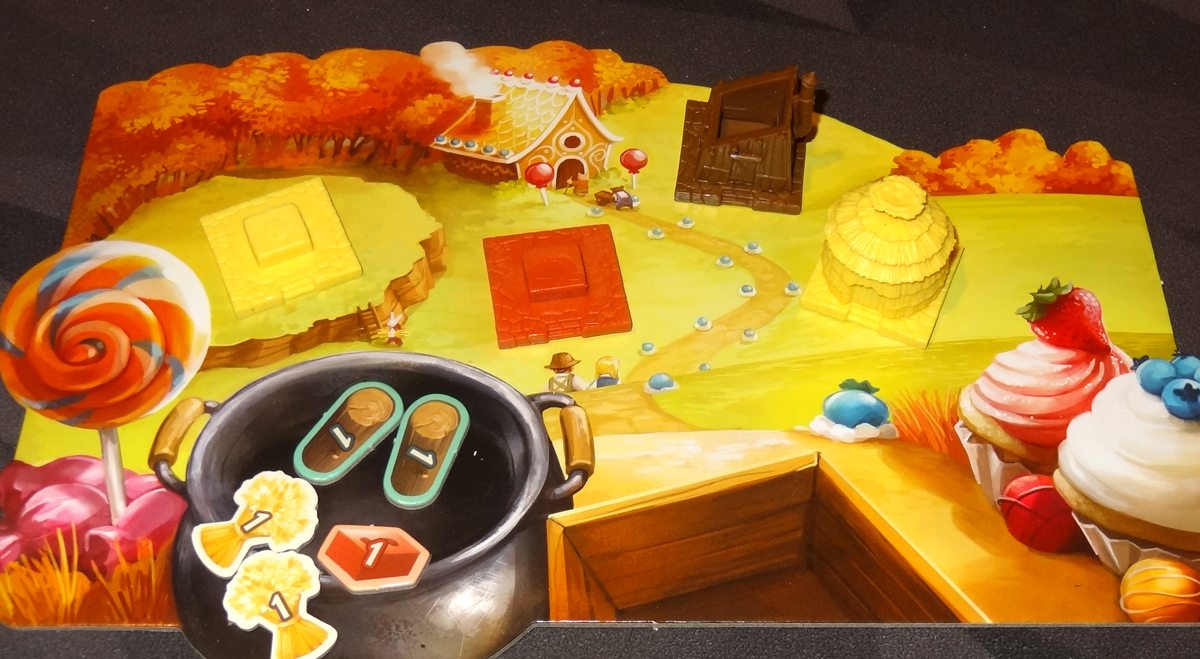
Building Phase
Each player in turn order gets 2 actions. You can choose any of the following (including repeating an action):
- Build 1 house section (costs: 2 for foundation, 4 for walls, 6 for roof).
- Draw a fable card.
- Take 1 resource of your choice.
When building houses, you must build from the bottom up, and you can’t mix materials in a single house. You may have multiple houses under construction, but you may not start a house if you have an unfinished house of that material. You may only have up to two houses of each type, and your player board may have up to 5 build sites.
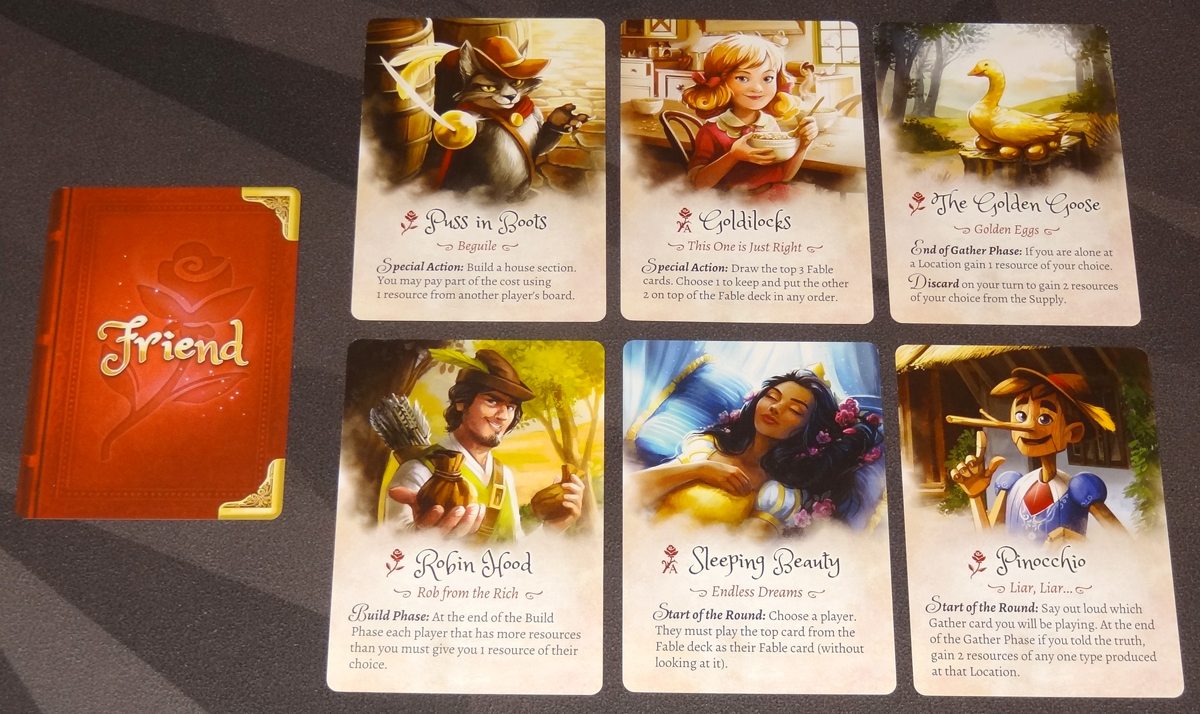
Every time you build walls of any type, you get a friend bonus. Draw the top friend of the deck. Either keep it (and discard your old friend, if any) or else give the new friend to another player, forcing them to discard their old friend (they cannot choose to keep their old friend). Friends have various different effects, as stated on the cards.

If you’re the first to complete a house of a particular building material, you get a bonus: 1 friend (keep or force another player to take it), 2 fable cards, or 1 of each resource from the supply.
Cleanup Phase
After everyone has taken their 2 actions, the Starting Player token is passed, everyone retrieves their pigs, and then the gather location boards are restocked—you add the full amount to each board, so if there is a remainder from the previous round, some locations may have a lot of resources piling up.
The game ends at the end of a round when any players have finished at least 3 houses. If there’s a tie for number of houses (because more than one player reached 3 in the same round), then the quality of the houses breaks ties. (Brick is better than wood, which is better than straw.)
2-Player Variant
The 2-player game adds a dummy player called Prince Regal—basically each turn, you roll the Prince Regal die. Prince Regal goes to the location, takes half (rounded down) of the resources there (putting them back into the supply) and then goes away. He won’t ever share a location with anyone because that happens before the pigs arrive at the locations to gather resources.
If there are ever more than 10 resources at a location, Prince Regal will take half from the location with the most resources instead of rolling the die. (If there’s a tie, Prince Regal prefers brick, then wood, then straw.)
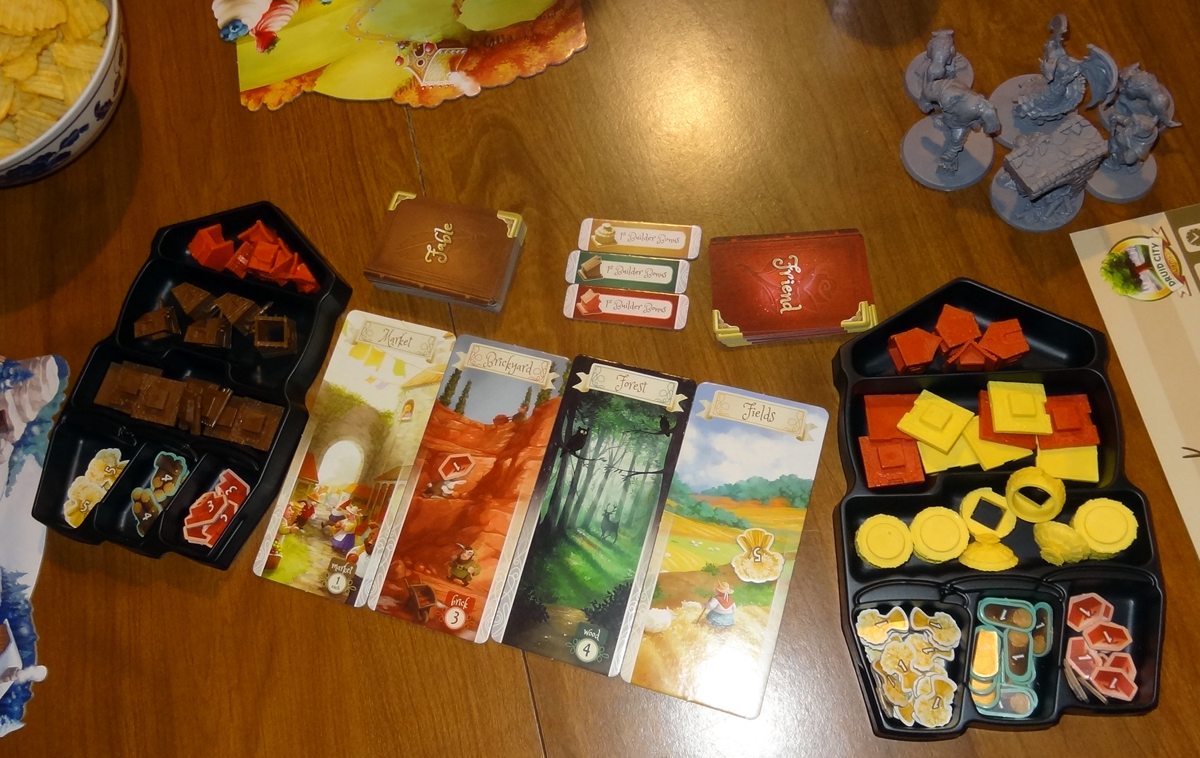
Why You Should Play The Grimm Forest
At first glance, Grimm Forest looks like a resource management game: you collect resources and use them to build houses. That’s true, but only partly. The key mechanic is the gathering—figuring out where other players are headed, and using that knowledge to your own advantage. On the first turn, it’s just sort of a gamble: do you go for straw, because it’s more plentiful and it’ll be easier to gather? Or do you go for the brick, because there’s not as much and maybe nobody will want to go there? Of course, if multiple pigs show up in the Brickyard, then that’s doubly bad.
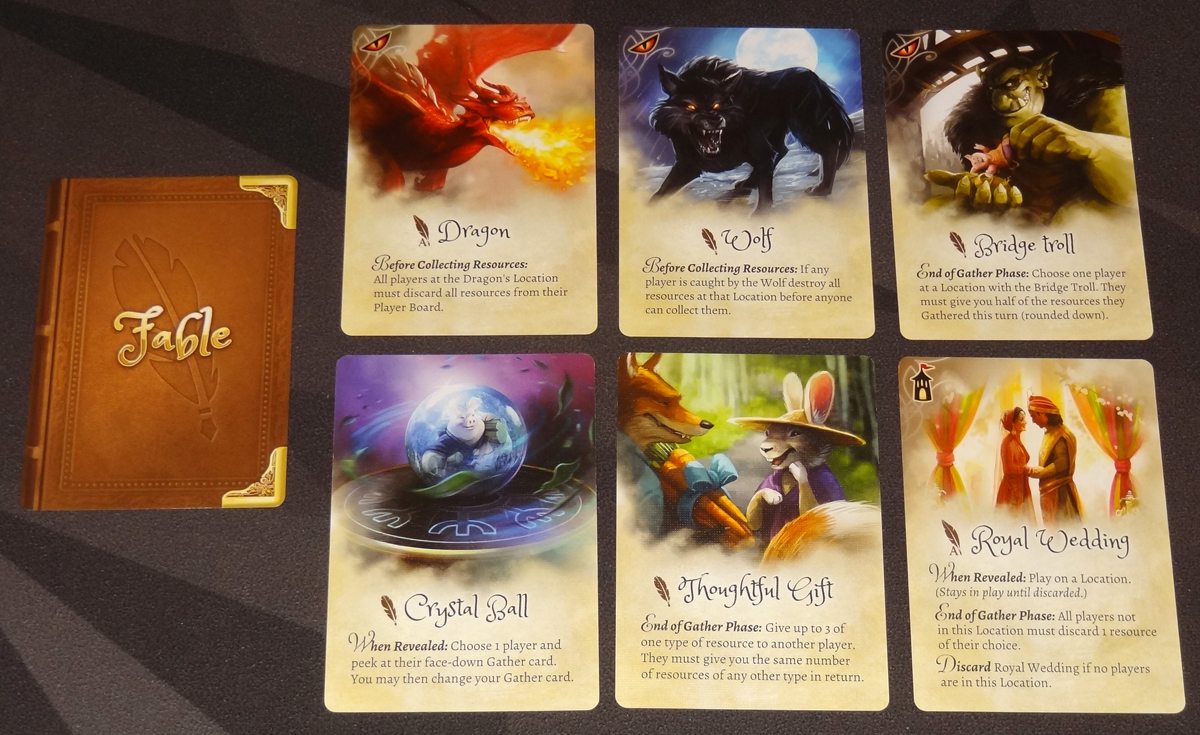
Once you start collecting fable cards, however, you have even more of an incentive to figure out what the other players want. Use a Wolf to wipe out resources from a location, or play Roar to try to scare other players away from your location. Powerful friends can let you steal actions from other players at your location. Fable cards can be really powerful, but you’ll have to decide whether to use your precious Building Phase actions to draw fable cards or get resources. Or, you know, build something.
Of course, there is still some resource management. Each house costs the same number of resources to build, but straw is plentiful and brick is scarce. You’ll have to work out the trade-off between building cheap straw houses or building brick houses that can’t be blown down by the Big Bad Wolf. Also, since you get a bonus for finishing a house type that nobody else has built yet, players often tend to specialize at least at first so they don’t have to race for a particular resource.
The friends provide an interesting tweak. Each one has different abilities, but you have to build a wall (or get a first-builder bonus) to get one. The fact that you can send an unwanted friend to another player is pretty fascinating—when you draw a friend, you have to decide whether it is better than your current friend—or worse than an opponent’s. Giving a friend away means that you’re giving your opponent some sort of benefit–just one that you feel isn’t as good as the one they already have. That decision can be a tricky one.
There isn’t much of a catch-up mechanic built into the game, so if you are bad at guessing which location to go to or you don’t use your fable cards wisely, you may struggle to keep up. I know this has been frustrating for some players, who feel they want a little more strategic control over their actions, but The Grimm Forest is all about figuring out your opponents and using that knowledge to further your own goals. If you’re the sort of player who chooses gather cards randomly because you feel they’re all equivalent, this may not be the game for you.

I liked the fairy tale theme, particularly the way characters from other tales show up as friends or on fable cards. I’ve always liked to read new twists on fairy tales, so having a game that plays around with those themes is fun, too. Despite the age rating, I think this could be a good fit for families and younger kids. One thing I did think was a bit odd is that the title and the cover image make it look like it’s going to be somewhat dark and spooky. That, and the 14+ age rating, may give people the wrong impression of the type of game it’s going to be.
I think my only complaint, if any, is that the game is a little overproduced. The original design, Little Pig, didn’t have the fancy artwork or miniatures, but it failed to fund on Kickstarter. I do like the Mr. Cuddington artwork a lot better, and I appreciate all the attention put into producing a gorgeous game, but I think all the extras may make The Grimm Forest a bit too pricey for some players who would otherwise be the ideal audience for the game. But based on the quality of the components, the $50 price tag does seem reasonable for what you get.
Overall, I found The Grimm Forest to be a great light-strategy deduction game that I can play with both kids and adults. I love simultaneous-selection games, and this is one that really rewards you when you can anticipate other players’ choices. There are some great, tough decisions to be made throughout the game, but the rules themselves are straightforward and easy to learn.
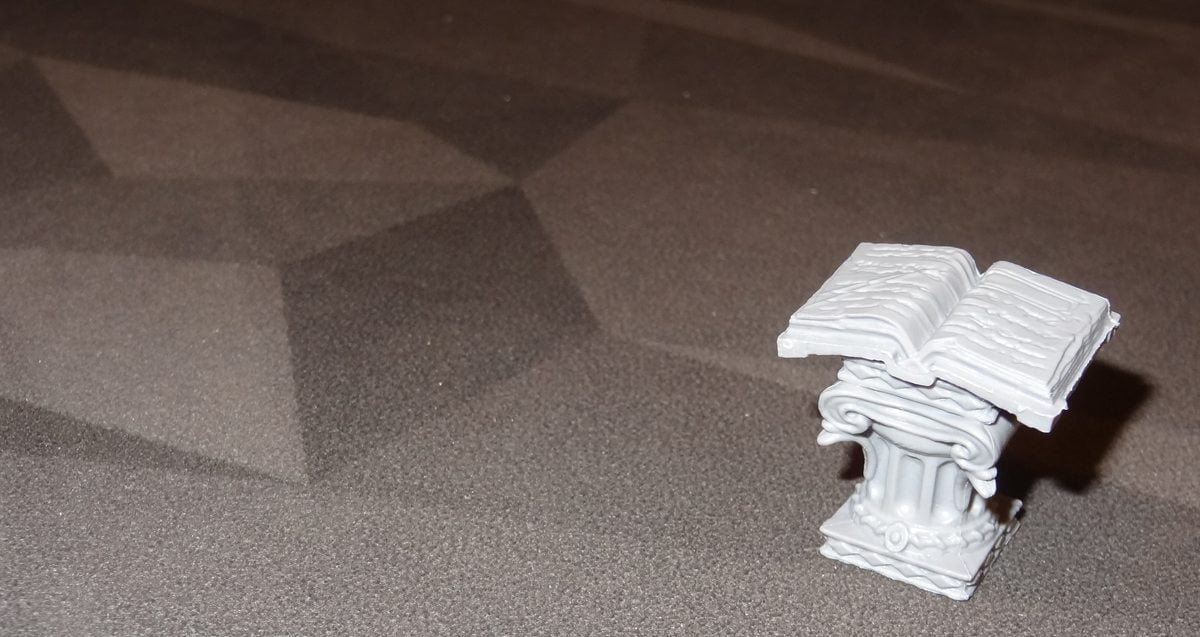
Disclosure: I received a finished copy of the game for review.
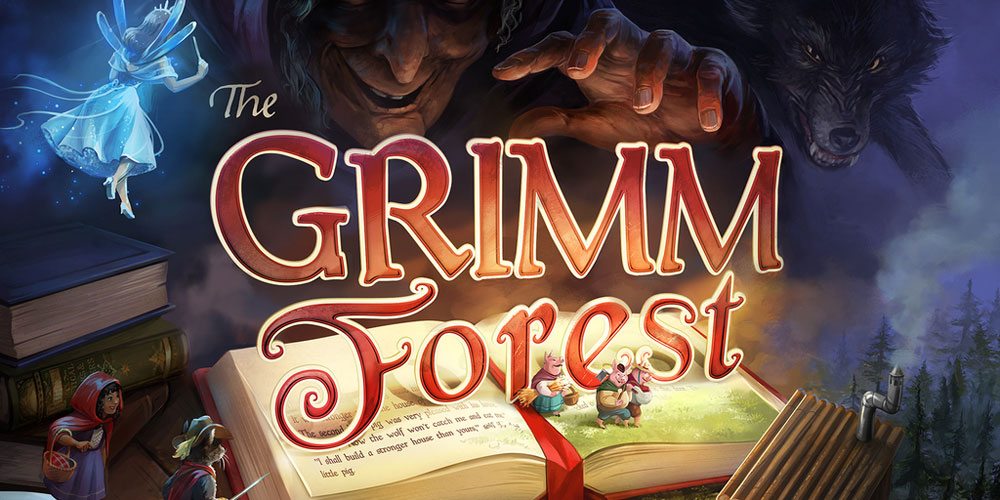




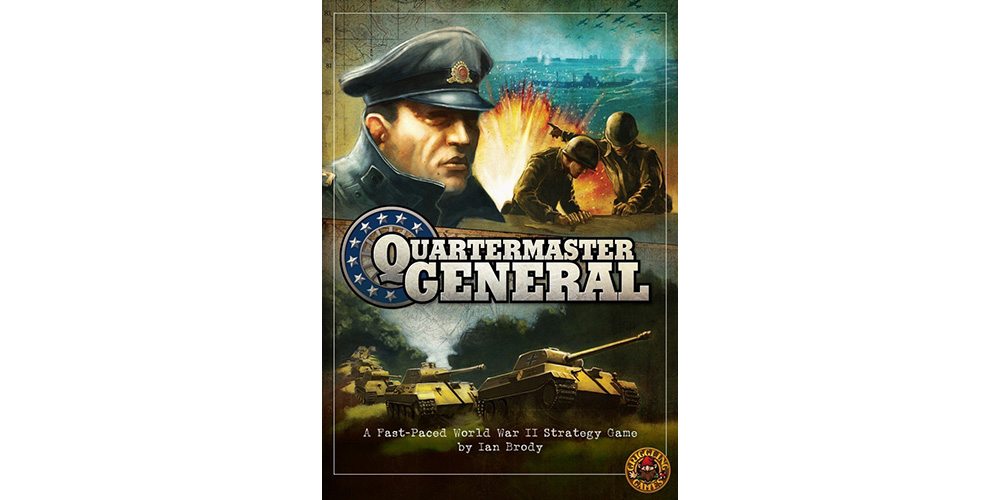
Hey Geek (Racist) dad. Can you please explain your bigotry in this section of your review for Grimm Forest?
“I liked the bit of diversity seen in the friend cards. There are various characters from classic Grimm fairy tales, but not everyone is portrayed as Eastern European. Snow White is Asian, and Little Red Riding Hood is black. Most of the characters are still white, but I liked seeing a couple of non-white faces in the mix. (And, of course, there are plenty of animals and monsters.)” you specifically mention diversity. To you that means non- white apparently. Are “white” people not diverse? Do you have a problem with Eastern European fairytails obeying the source material? Are you a racist? I think so. We have no room in this world for your hatred. Go away!!!
“Diversity” by definition means having a mix, and so I pointed out that not everyone is portrayed as Eastern European. There ARE still white characters in the friend cards, but if they were ALL white then that would, by definition, not be diverse. I didn’t make any suggestion that white characters should not be included—I’m simply praising the publisher’s decision to have their game include a mix of characters in their game, so that even more players will be able to see themselves reflected as they play. If you’d like to consider that “hatred” and “racism” then this game is probably not for you.
Mr. Liu,
I’m all for diversity. It’s the way you phrase it that makes this an issue. You could have simply stated that the game includes a diverse portrayal of characters which is great. There is no need to specifically call out one demographic. I’m sorry if this offends you, and obviously it was not your intent to offend. It simply bothers me to read articles that bring these issues up in a non productive manner. This is just my opinion, and I think this is a great game, diverse cast and all. I understand your point of view now with the reply, and hope you understand.
Well, I think in a game based on Grimm fairytales, it’s expected that most (or all) the characters will be specifically Eastern European, and I thought it was notable that not everyone was. In particular, there are plenty of games in which the majority (or all) characters are white males, so I feel it’s fair to call out that demographic specifically because nearly all other demographics are underrepresented. If I had said instead “not everyone is portrayed as the same” would that have been better? Because the “same” would have been, even if not stated explicitly, assumed to be Eastern European anyway.
As far as being “non-productive,” I try to use my voice as a reviewer to highlight inclusivity in games, whether that’s in the characters in a game or the actual people working on the games. For me, that’s productive conversation because it tells publishers that I appreciate what they’re doing, and because I hope it encourages gamers to consider the characters, artwork, designers, artists, etc. involved in the games that they choose to play. What I don’t find as productive is starting out conversation by calling somebody a racist first, and then ending by telling them to “go away.”
Mr. Liu, maybe it was an overreaction on my part intitially, but I was so offended by your statement that I couldn’t help it. Please accept my apology. I still think there are better ways to advocate for diversity other than shaming people for something they have no control over. These are sensitive issues, and I wish they could be spoken about with less divisiveness. Clearly, your response tells me your intention was not to offend. Maybe I’m being overly sensitive, but it hurts sometimes to see people say things in this manner. Otherwise a great review, I just don’t appreciate some of the phrasing. Thank you for your response and understanding.
Okay, just so I’m clear: I’m not at all shaming anyone for having white skin, or any other color skin. I am praising a publisher for including characters who aren’t white, because in so many games having white characters is the default, and often the only option. I’m less likely to emphasize a game that includes only, say, white male characters, because I’m more interested in promoting publishers that celebrate diversity than shaming publishers that don’t.
I’m glad we seem to understand each other now; I would reiterate that if you are interested in speaking with less divisiveness, then perhaps starting off with name-calling isn’t the best approach, even when you are offended. I hope my responses to you, despite my own strong feelings about the subject, have not come across as intentionally hurtful.
Mr. Liu, you are correct. Apologies for my impassioned response. You are a good reviewer and a good person. I’ll take this as a lesson to learn. I still think the language was not the most appropriate, but I value your opinion. Let’s all just unite as gamers and do what we love.
I agree with Paul. This seems wrong. I came across this game at Barnes and Noble recently. After seeing some reviews, this one was at the top of google searches.The author responses only make it worse. You are wrong, Jon. Stop digging a hole. This behavior is never okay even if it is against the majority. You can disguise it as whatever you want, but your true self is evident. You have an agenda, and it’s clear. Hate has no place in this world anymore.
You’re absolutely right. My agenda is clear: hate has no place in this world anymore. That’s exactly why I celebrate diversity when I see it. Paul said “Mr. Liu, you are correct.” I’m so glad you agree with him.
Gina, please read the entire conversation. I admitted that my reaction was rash. Mr. Liu already clarified his stance. Please don’t jump to conclusions like I did. I understand your passion, but this type of rhetoric leads no-where. We are all gamers. Let’s just enjoy our passion together despite our disagreements.